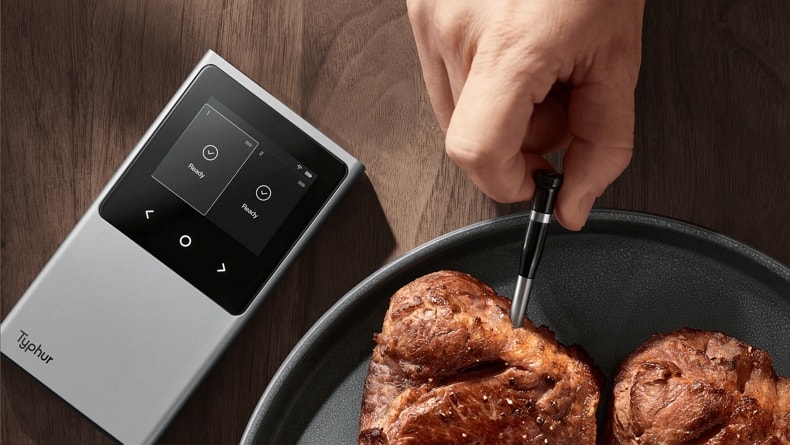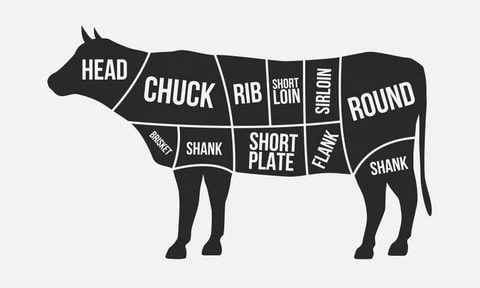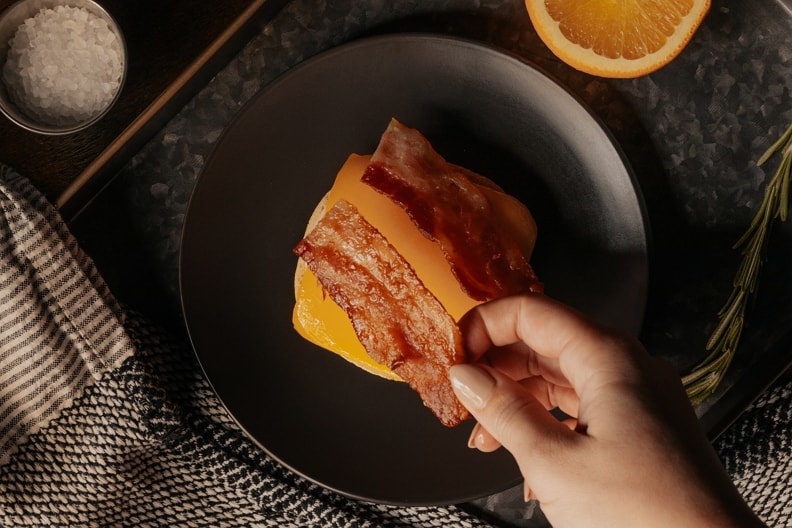Have you ever wondered what is the red juice in your steak? Well, it’s time to put your mind at ease and your culinary curiosity to rest.
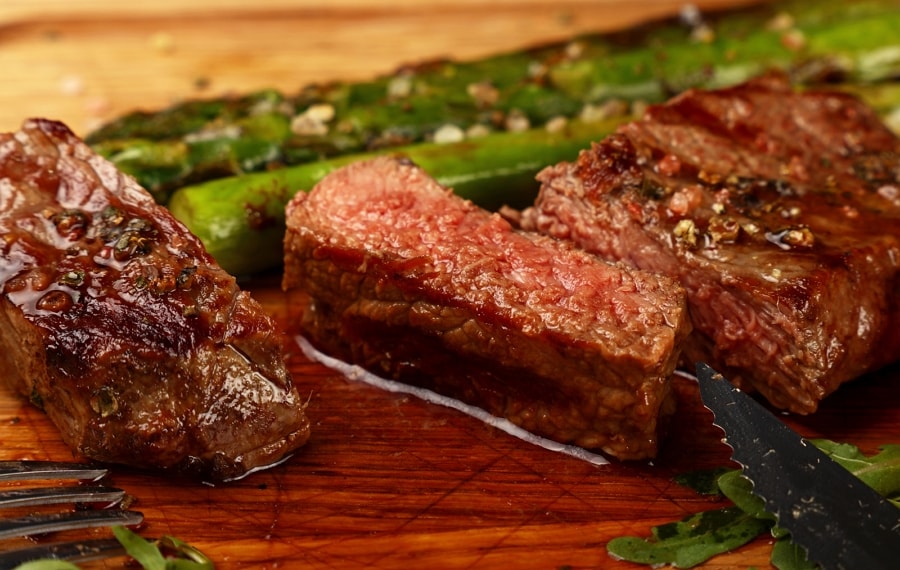
What is the red juice in steak?
While many people love a good rare steak, others have a fear ― or at least concerns ― about eating meat that looks “bloody.” Actually, during the slaughtering process, cattle are nearly drained of all blood, leaving very little in the muscle tissue.
So, that red juice in the meat isn’t blood. Instead, it’s a mixture of a protein called myoglobin and water. As the meat ages, muscle tissues break down, causing both the liquid and myoglobin to seep out.
What is myoglobin?
Myoglobin is a protein found in muscle tissues, and it’s key in distinguishing between white and red meat. The more myoglobin cells there are, the redder the meat. Most mammals, which have high levels of myoglobin, are considered red meat. Animals with lower levels of myoglobin, like poultry or seafood, are known as white meat.
Myoglobin vs blood
A medium-rare steak looks bloody because the myoglobin hasn’t reacted with heat to change color yet. Conversely, a well-done steak is dry because the moisture and myoglobin evaporate, making the meat less juicy.
Myoglobin is the reason steak changes color at different levels of doneness. At rare or medium-rare doneness, myoglobin is bright red. With increasing temperature of the meat, myoglobin darkens in color. At medium doneness, myoglobin turns into metmyoglobin, a substance that gives a brownish hue. When fully cooked, metmyoglobin and myoglobin transform into hemichrome, making the meat appear gray.

Myoglobin vs hemoglobin
Myoglobin and hemoglobin, found in blood, are similar in that they help red blood cells store oxygen. But while hemoglobin works in the blood vessels, myoglobin works in the muscles.
The red color is because both contain a component called heme. Heme turns red when it’s oxygen-rich and darker when it’s oxygen-depleted. Overexposure to oxygen gradually turns it brown, which is why we can judge the freshness of meat by its color.
Note: Frozen meat usually appears dark red, not due to staleness, but due to vacuum packaging and lack of oxygen. Exposing it to air slowly brings back the fresh red color.
Is myoglobin safe to eat?
The safety of myoglobin in steak depends on whether the steak has reached the required internal temperature. You can check our steak temperature guide to find the safe internal temperature for Medium Rare, Rare, or Well Done steak.
How do you keep a steak juicy?
Keeping a steak juicy is all about understanding how heat affects the meat’s moisture. When you cook a steak, the liquid is forced inward, away from the heat source towards the cooler center of the steak. If steak is sliced as soon as it comes off the heat, the imbalance of internal pressure causes desired juices to be expelled rapidly, leaving you with a drier, less flavorful piece of meat.
Take your steak off the heat source when it’s a few degrees Fahrenheit below the desired core temperature, typically 5°F-10°F, and then let it rest for about five minutes, these juices get a chance to redistribute and reabsorb throughout the steak. This simple step ensures that when you cut into your steak, less liquid is lost, reducing the amount of ‘blood’ (which is actually myoglobin, not blood) on your plate.
Note: If you are cooking large cuts of meat, you can learn how to tenderize steak first.
To help you know the best time to remove your steak from the heat, it’s recommended to use a wireless meat thermometer for steak, Typhur Sync. With it, you can monitor the meat temperature changes, and it has a built-in alarm to tell you when you should take your steak off the heat source.
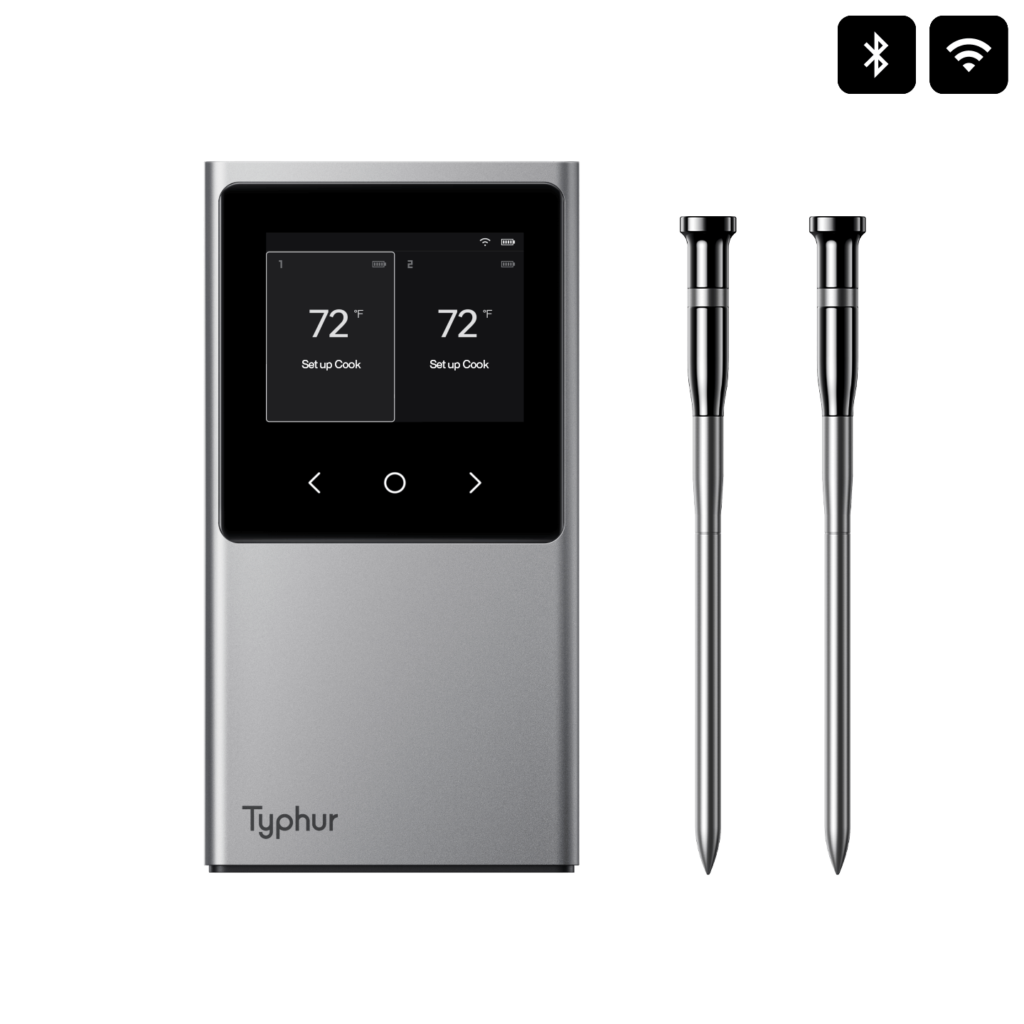
Smart Bluetooth and WiFi Meat Thermometer
